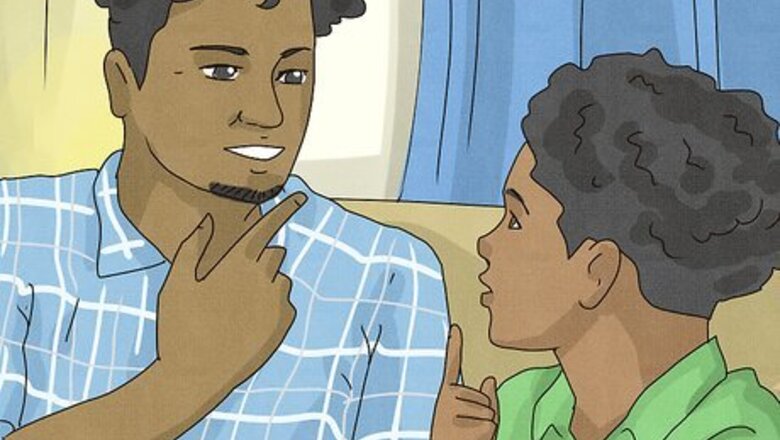
views
- Adjust the level of information you include based on your child’s age and level of interest.
- Focus on explaining the parties in a neutral way, even if you aren’t super fond of one side of the aisle.
- Be honest with your child and encourage them to engage with the political process as they get older. This is an opportunity to get your child interested in civics!
Explaining Republican vs. Democrat Beliefs

Tailor the conversation based on your child’s age. A 6-year-old does not have the skillset to process the nuances of the debate over universal healthcare, while a 15-year-old might actively enjoy digging into the complex stuff. You know your child best, so adjust your explanation to suit what you think your child will understand. Take your child’s interest level into account, too. If your kiddo is super interested in this, feel free to expand on things a bit. If they just want the bullet points, keep things short and sweet. This is an understandably difficult conversation, so enlist help from a partner or teacher if you'd like.

Use a metaphor that your child will understand. Explaining the political process can be difficult because it relies on so many underlying concepts and terms. If your child isn’t old enough to understand political terms, use a simple metaphor that your kid will be able to comprehend. You might use: Boys vs. Girls: “You know how you and your friends sometimes mess with the boys and they mess with you back? It’s really because the two groups just want different things…” Professional sport leagues: “Picture the National League like they’re the Republicans and the American League like they’re the Democrats. Both leagues compete within themselves until the playoffs decide the winner...” Two principles: “Imagine there are two principals interviewing to run your school. One might want to dig deep into the curriculum your teachers cover while the other might care more about upgrading the building…”
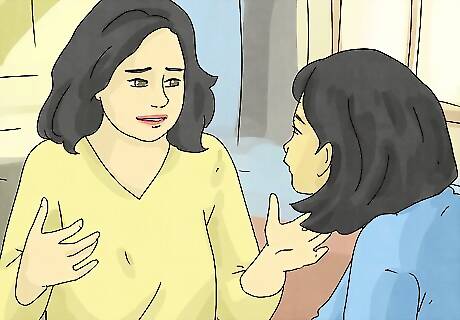
Stay away from making one side’s views sound scary. Regardless of your personal beliefs, try to avoid demonizing one political side or the other. Even if you are 100% in the right, your child isn’t nearly old enough to understand why, and all you’re going to do is end up making them afraid. It’s best if you leave the moral judgements and warnings for when they’re older and more informed. Emphasize that the underlying tension here goes back to a difference of beliefs about what is best for the country—not that one side is good and the other is bad. As best as you can, keep it fun and factual. Make politics sound exciting, not like something your child needs to be wary of.
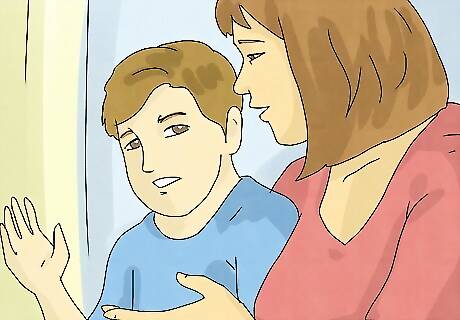
Be honest, but avoid unnecessary, biased commentary. Your child is almost certainly going to have questions, and that’s great! Answer them as genuinely and honestly as possible. However, if they ask a question and you find yourself tempted to throw in some personal commentary or use colorful language to answer them, just don’t. Keep things grounded. Use neutral language that your child will understand to break down your answers to their questions. If they have questions about the political process, keep it simple. If they ask, “How do Republicans and Democrats choose their candidate?” you might just say, “A bunch of people debate the issues and the public chooses who makes the best arguments.”

Expect to be asked about your personal beliefs. What you tell your child is entirely up to you. On one hand, it’s good to be honest and open about what you believe with your child. On the other hand, it may be smart to avoid accidentally sending your child the message that there’s only one “right answer” here. It’s up to you and what you know about your child. If you want a middle ground, you can always just say something like, “I’m a Republican, but I agree with a lot of Democratic points, too,” or, “I’m in the middle. I sometimes vote for Republicans, and sometimes I vote for Democrats.”

Gloss over the minutiae if your child isn’t interested. Analyzing hyper-specific policy positions and digging into the complex philosophical debates about the political good might be fun for you and other adults, but it’s just going to turn your child off from politics and confuse them. Only dig as deep as your child really wants to go to avoid turning them off to politics. If you want your child to be an engaged, civic-minded citizen, take this slow. It’s great that your child is interested enough to ask questions, but don’t overload them with info.
How do you explain the Democratic Party to a child?
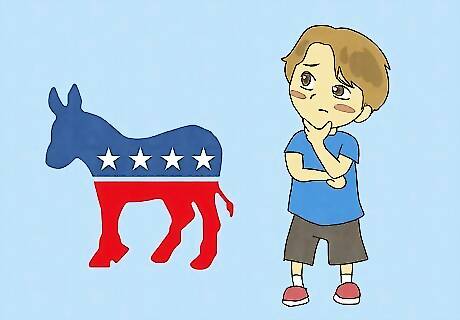
Start with the color blue and the donkey to cover the basics. Your child is likely to come across some basic election iconography, so starting with the basics is probably ideal. You may want to stop here if your child is on the younger side and they aren’t super interested in politics. You could say: “So, the Democrats are the blue guys. They use a donkey as their mascot and people will often say they’re ‘on the left’ or ‘liberal.’” If you want detail, you can explain that Democrats are associated with the color blue because of how news outlets displayed election results on TV and that they’re on the left because of where liberals sat in British parliament. The donkey is the symbol of the democrats due to a slick ad Andrew Jackson used in the 1800s.
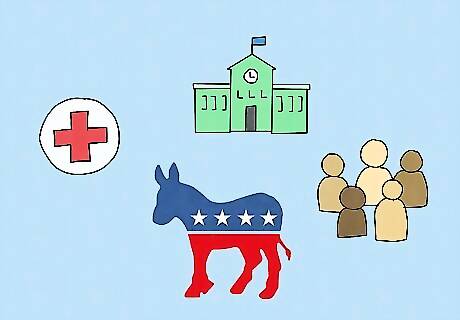
Cover the basic policy positions that Democrats advocate for. A pre-teen or older child is very likely to wonder what the key distinctions are between Democrats and Republicans—especially if your child is old enough to understand politics is related to policy. You might explain a few of the core positions that democrats hold. For example: “Democrats believe in higher taxes for people who make more money. They want to fund social programs, expand healthcare, control guns, and protect the environment. They think we should spend more money on schools and less money on the military.”

Break down the Democratic philosophy towards governance. If you want to go even further because your child is interested or they’re on the older side, you could explain the core ideas that guide the Democratic party and their policy positions. You could say: “Democrats believe in the power of government to be a force for good. They think that unregulated business and corporate interests get in the way of people’s freedom and happiness, so they think it’s the government’s job to get involved.”
How do you explain the Republican Party to a child?

Break down the color red and the elephant. The preliminary information is just as important for Republicans as it is for Democrats. Explain all of the key symbols and icons a child might encounter when they see or hear things about Republicans. If your child is super young, this might be where you end things. You may say: “Republicans are the red team. Their mascot is an elephant and people often say they’re ‘on the right’ or ‘conservative.’ If you see the letters ‘GOP,’ it’s the same thing as Republicans.” If you want to be specific, you could explain that Republicans are red because both words start with “R” and TV crews used the color as shorthand for the party. Explain that they’re on the right because of where they sat in British parliament and that they’re associated with elephants because of political cartoons from the Civil War. You should also note that people call Republicans the GOP, which is an acronym for “Grand Old Party.”
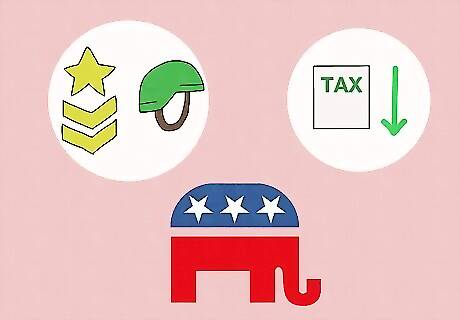
Go over the Republican core positions in simple terms. If your child is interested, they’re a pre-teen, or they’re older, you’ll likely want to explain the main policy positions of the Republican party. For example, you might explain: “Republicans want lower taxes for everybody so they have more money for themselves. They think individuals should be in control, not the government, and they believe it’s important to maintain a strong military to protect America.”

Expand by going into the theory behind the Republican platform. If you’ve got an older child who is actively taking an interest in this, they might be super interested in the ideas guiding the Republican party. Dig into the underlying beliefs so that your child can explore a bit. You might say: “Republicans think that government often does more harm than good, and they believe that private businesses and individuals accomplish more when they’re given the most freedom possible. They think the government should have a minimal role most of the time.”
Supporting Your Child’s Political Curiosity

Visit historical museums and state buildings with your child. Actually seeing some political relics and buildings may help your child build a better understanding and cultivate their curiosity. For many children, a hands-on experience is more meaningful and engaging than simply hearing about something in abstract terms. Find something fun and political to do together and get out there! You likely want to avoid any political protests or rallies. These events can be especially charged and may spook your child.
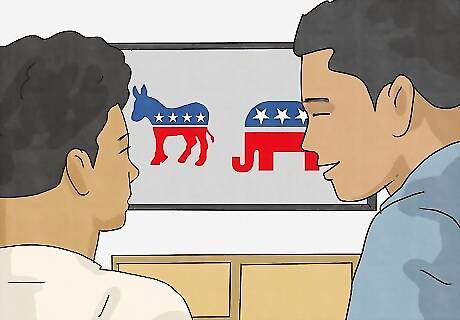
Ask if they’d like to watch the news and political debates with you. If all of these questions are coming up because it’s election season, ask your child if they’d like to hang out while you watch debates, coverage, and analysis. This is a great way to teach them about issues people care about while exposing your child to the political process in action! Make election night fun if your child is old enough to be interested. Grab a pizza or make a big dinner, let them stay up a little later than normal, and watch the results trickle in together. Election night can have the same energy and tension as the Super Bowl for a younger kid!

Encourage your child to read more. The fact that your kid is asking about Democrats and Republicans is a huge sign that they’re becoming curious about the world. Take them to the library and dig around some books about politics, or order some books designed for their age group so they can explore the subject further. Even if your child isn’t young enough to read books like this, you can print out an informative coloring page for them of a Democratic Donkey and Republican Elephant! Duck for President by Doreen Cronin, F is for Flag by Wendy Cheyette Lewison, and If I Ran for President by Catherine Stier and Lynne Avril are all popular books for young children that will teach them about the political process.
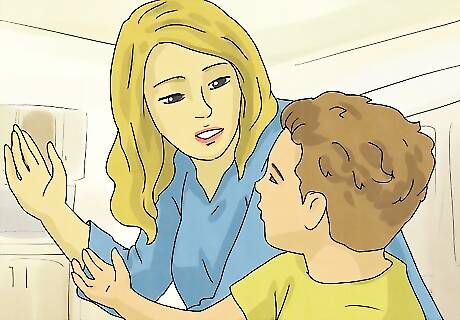
Keep civility at the forefront of your political conversations. Remind your child regularly that people aren’t defined entirely by their political beliefs. Reinforce the idea that there’s always two sides to every story and nobody is wrong for falling on one side of the aisle or the other. This way, your child will grow up with an open mind so that they can figure out what they believe on their own.




















Comments
0 comment